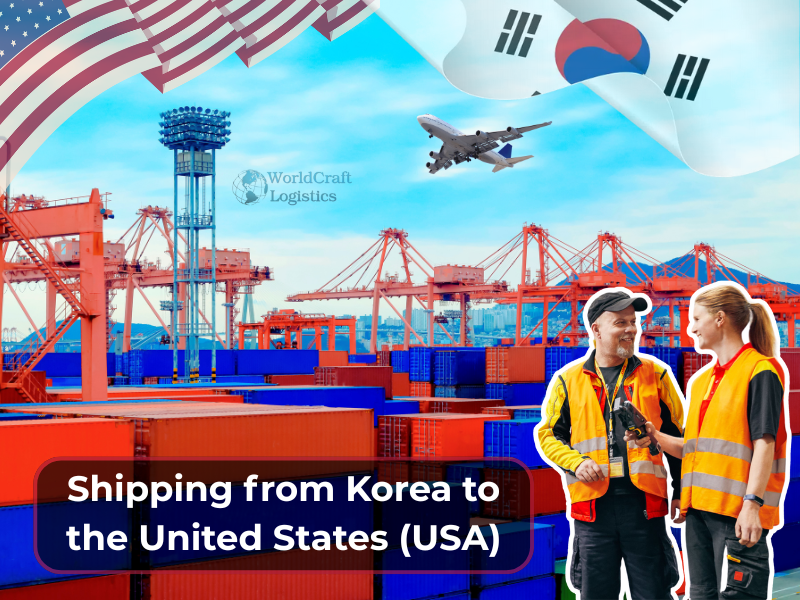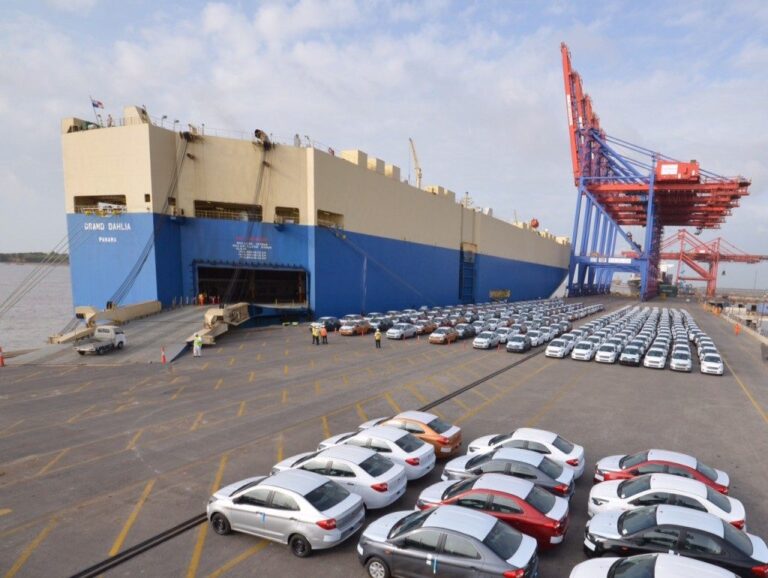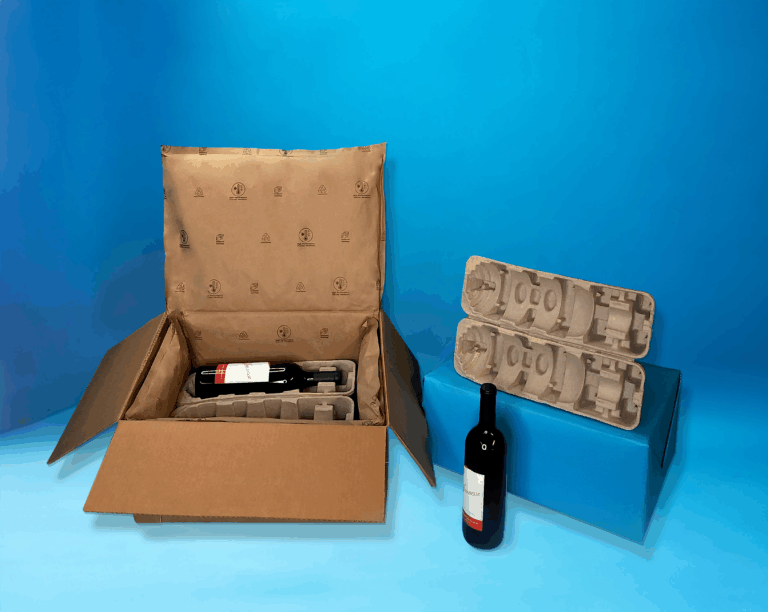Shipping From Korea: The Ultimate Guide (2025)
Your Complete Guide to shipping from korea
Navigating the complexities of international shipping can be a daunting task for businesses, particularly when dealing with shipments from South Korea. As a global hub for technology, fashion, and manufacturing, South Korea presents significant opportunities for importers and exporters. However, the challenges associated with shipping from this region—such as fluctuating costs, varying transit times, and intricate customs regulations—can create obstacles for even the most seasoned business owners.
One of the primary concerns businesses face is understanding the various shipping methods available. Whether opting for air freight, ocean freight, or express services, each option has its own advantages and disadvantages. For instance, air freight is typically faster but comes with higher costs, while ocean freight offers a more economical solution for larger shipments but requires longer transit times. This guide will break down these methods, helping you make informed decisions based on your specific needs.
In addition to shipping methods, costs play a crucial role in the logistics equation. Understanding how shipping rates are calculated—taking into account factors like weight, volume, and destination—will empower you to budget effectively and avoid unexpected expenses. We will provide insights into current market trends and strategies to minimize costs.
Transit times are another critical element to consider. Delays can impact your supply chain and customer satisfaction. We will outline average transit times for different shipping methods and provide tips on how to ensure timely deliveries.
Customs regulations can be a significant hurdle when shipping internationally. Navigating the intricacies of customs paperwork, duties, and taxes can be overwhelming. Our guide will cover essential customs requirements, including changes to de minimis thresholds that may affect your shipments, ensuring you remain compliant and avoid costly penalties.
Finally, understanding the risks associated with international shipping is paramount. From potential damage during transit to customs delays, we will discuss how to mitigate these risks through proper packaging, insurance, and choosing reliable logistics partners.
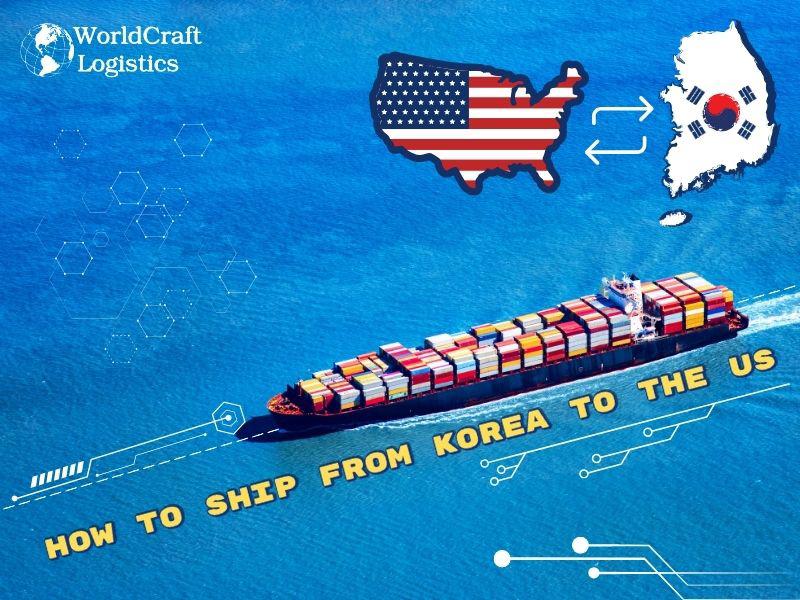
By the end of this guide, you will have gained expert knowledge on how to navigate the complexities of shipping from Korea efficiently. Armed with practical insights and tips, you will be better positioned to streamline your shipping processes, ultimately enhancing your business’s operational efficiency and customer satisfaction.
Table of Contents
- Your Complete Guide to shipping from korea
- Understanding Your Shipping Options: A Detailed Comparison
- Deconstructing the Cost: A Full Pricing Breakdown
- Transit Time Analysis: How Long Will It Take?
- Navigating Customs Clearance: A Step-by-Step Guide
- A Practical Guide to Choosing Your Freight Forwarder
- Incoterms 2020 Explained for Shippers
- Risk Management: Identifying and Mitigating Common Shipping Problems
- Frequently Asked Questions (FAQs) for shipping from korea
- Conclusion: Key Takeaways for Successful Shipping
- Important Disclaimer
Understanding Your Shipping Options: A Detailed Comparison
Overview of Shipping Options from Korea
When it comes to shipping goods from Korea, businesses have a variety of transportation methods at their disposal. The choice of shipping method can significantly impact costs, delivery times, and overall logistics efficiency. Understanding the nuances of each option is crucial for international shippers, importers, and exporters aiming to optimize their supply chain. Below is a comprehensive comparison of the main shipping methods available for transporting goods from Korea.
| Shipping Method | Best For | Speed | Cost Level | Key Advantages | Key Disadvantages |
|---|---|---|---|---|---|
| Sea FCL | Large shipments, consistent demand | Slow (20-40 days) | Low | Economical for large volumes, stable pricing | Longer transit times, requires port access |
| Sea LCL | Smaller shipments, varied destinations | Moderate (25-45 days) | Medium | Flexible for lower volumes, less storage required | Longer consolidation times, potential for damage |
| Air | Urgent shipments, high-value goods | Fast (1-7 days) | High | Quick delivery, reduced risk of damage | Expensive, weight limitations |
| Rail | Overland routes to nearby countries | Moderate (5-15 days) | Medium | Cost-effective for bulk shipments, reliable | Limited routes, slower than air |
| Express | Time-sensitive deliveries, small packages | Very Fast (1-3 days) | High | Door-to-door service, tracking available | Very high costs, size limitations |
Detailed Breakdown of Each Method
Sea Freight (FCL and LCL)
Full Container Load (FCL)
FCL shipping involves filling an entire container with your goods, making it ideal for businesses with large volumes of shipments.
- When to Use:
- Regular shipments of high volume.
-
When goods can fill a container.
-
Pros:
- Lower cost per unit compared to LCL.
- Reduced risk of damage due to dedicated space.
-
Faster unloading at the destination port.
-
Cons:
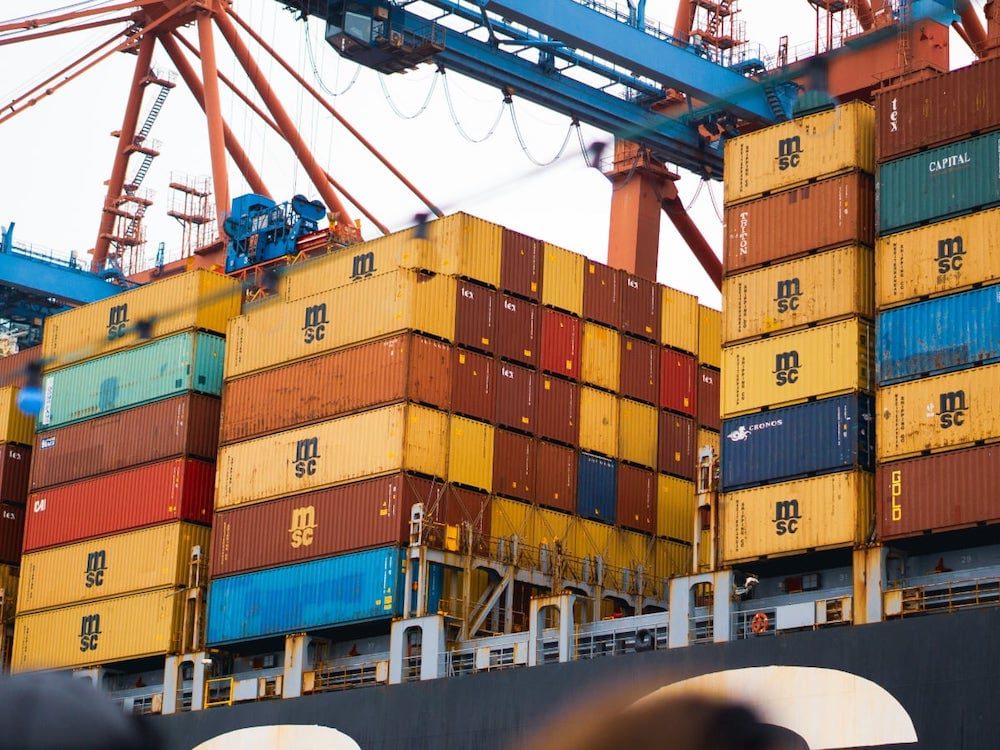
- Requires significant upfront volume.
- Longer transit times than air freight.
Less Than Container Load (LCL)
LCL shipping allows shippers to share container space with others, which is cost-effective for smaller shipments.
- When to Use:
- Smaller shipments not filling an entire container.
-
Flexible shipping needs.
-
Pros:
- Cost-effective for low-volume shipments.
-
No need for large inventory storage.
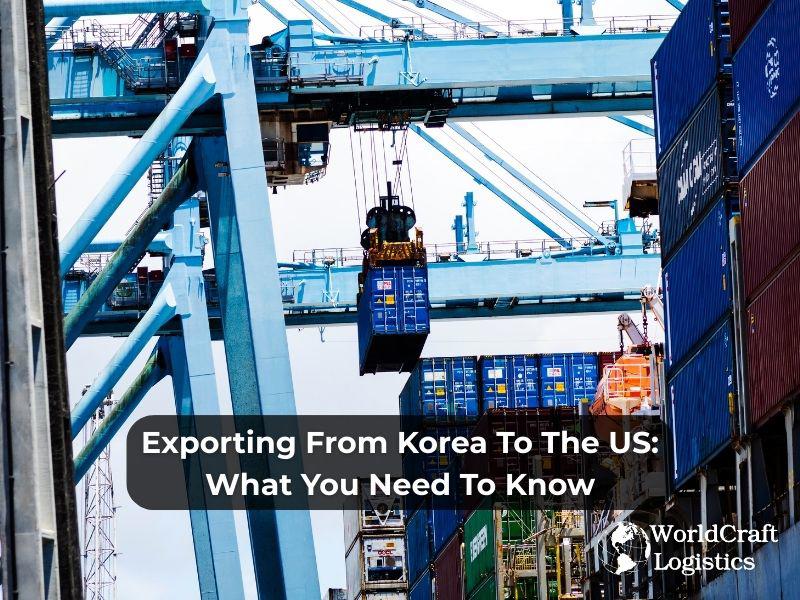
-
Cons:
- Longer transit times due to consolidation and deconsolidation.
- Increased risk of damage as goods are mixed with others.
Air Freight
Air freight is the fastest shipping method, making it suitable for urgent or high-value shipments.
- When to Use:
- Time-sensitive deliveries.
-
High-value goods that require quick transport.
-
Pros:
- Quick transit times (1-7 days).
-
Lower risk of theft and damage.

-
Cons:
- Higher costs compared to sea freight.
- Weight and size restrictions can limit shipment options.
Rail Freight
Rail freight is a viable option for shipments heading to nearby countries, particularly across Asia.
- When to Use:
- Bulk shipments overland to China or other neighboring countries.
-
When transit time is less critical.
-
Pros:
- Cost-effective for large quantities.
-
More environmentally friendly than air transport.
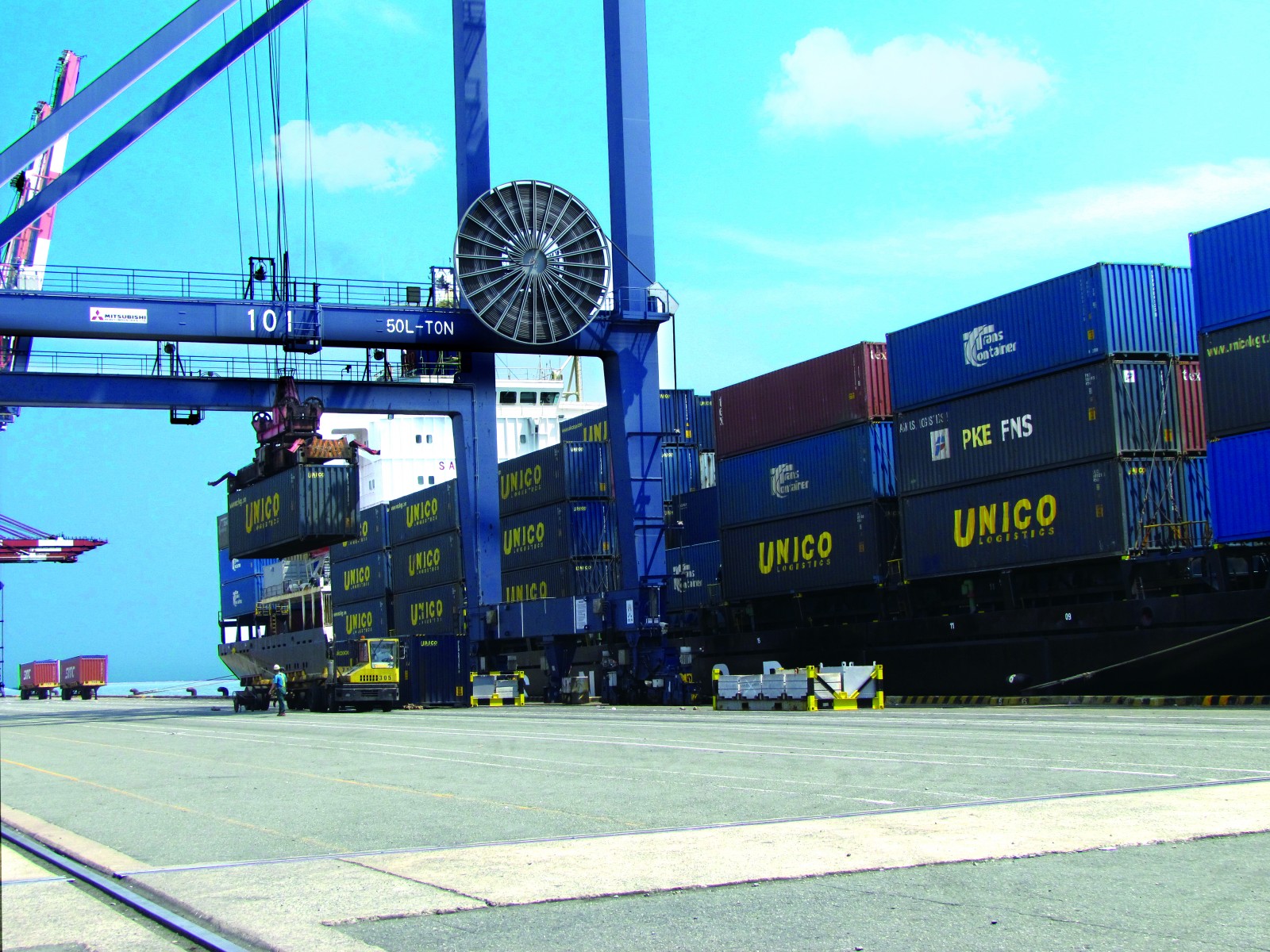
-
Cons:
- Limited routes and schedules.
- Slower than air freight options.
Express Shipping
Express shipping is designed for urgent deliveries and typically involves courier services.
- When to Use:
- Small packages that need rapid delivery.
-
Time-sensitive documents or items.
-
Pros:
- Fast delivery (1-3 days).
-
Comprehensive tracking and door-to-door service.
-
Cons:
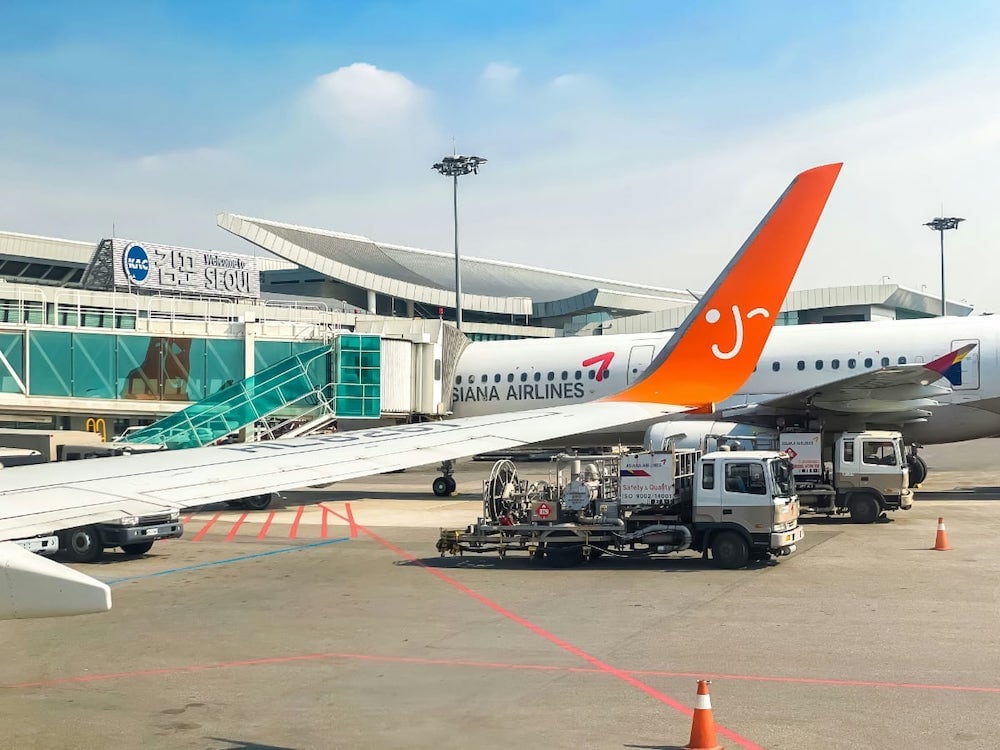
- High costs, particularly for international shipments.
- Size and weight restrictions apply.
Special Considerations
Multimodal Transport
Multimodal transport combines different methods of transportation (e.g., sea and rail) to optimize shipping efficiency and cost. This approach is especially useful for shipments that require flexibility or face geographical barriers.
- Advantages:
- Potential for cost savings by utilizing the strengths of different methods.
-
Greater reach, as goods can be transported through various channels.
-
Challenges:
- Complexity in logistics and coordination.
- Potential for longer transit times if not managed effectively.
Specialized Shipping Options
-
Roll-on/Roll-off (RoRo): This method is used for vehicles and large equipment, allowing them to be driven on and off the vessel. It is cost-effective for transporting vehicles but requires specialized ports.
-
Break Bulk: Suitable for large, heavy items that cannot fit into standard containers. While it offers flexibility, it may involve higher handling costs and risks of damage.
Conclusion
Choosing the right shipping method from Korea hinges on various factors including shipment size, urgency, and budget constraints. By understanding the advantages and disadvantages of each option, businesses can make informed decisions that enhance their logistics operations. Whether opting for the cost-effectiveness of sea freight or the speed of air freight, careful consideration will lead to improved efficiency and customer satisfaction in global shipping endeavors.
Deconstructing the Cost: A Full Pricing Breakdown
Understanding the Cost Components of Shipping from Korea
Shipping goods internationally can be a complex process that involves various costs. For businesses looking to import or export goods from Korea, it’s essential to understand these costs to make informed decisions. The total shipping cost can be broken down into three primary categories: Main Freight, Origin Charges, and Destination Charges. Each of these categories encompasses various factors that can influence the overall expense.
Main Cost Components
Main Freight
The main freight cost represents the bulk of your shipping expenses. It refers to the charge for transporting goods from the origin to the destination. This cost varies significantly based on the mode of transport—air, sea, or land—and the type of service chosen, such as Full Container Load (FCL) or Less than Container Load (LCL) for ocean freight.
-
Air Freight: Typically more expensive due to speed and convenience, air freight costs are calculated based on weight or dimensional weight, whichever is greater. Pricing often decreases per kilogram as shipment size increases.
-
Sea Freight: More cost-effective for larger shipments. FCL pricing is generally a flat rate for an entire container, while LCL is charged based on the volume or weight of the cargo.
Origin Charges
Origin charges are fees incurred at the point of departure. They can include:
- Terminal Handling Charges (THC): Fees for loading and unloading cargo at the port.
- Documentation Fees: Costs related to preparing shipping documents, such as bills of lading.
- Customs Clearance: Charges for clearing goods through customs at the origin.
These fees can vary depending on the shipping company, the port of departure, and the nature of the goods being shipped.
Destination Charges
Once the shipment arrives at the destination, additional charges may be applied, including:
- Terminal Handling Charges (THC): Similar to origin charges, but applicable at the destination port.
- Delivery Charges: Fees for transporting the goods from the port to the final delivery location.
- Customs Duties and Taxes: These can vary significantly based on the value and classification of the goods, as well as the regulations of the destination country.
Understanding these charges is crucial as they can significantly increase the total shipping costs if not anticipated.
Detailed Cost Factor Analysis
Main Freight
- Shipping Mode: The choice between air and sea freight can drastically affect costs. Air freight is faster but more expensive, while sea freight is slower but more economical for bulk shipments.
- Weight and Volume: Heavier and larger shipments often incur higher costs. For air freight, costs are calculated on a per-kilogram basis, while sea freight for LCL is based on the volume (cubic meters).
- Service Level: Express services will command a premium over standard shipping options.
Origin Charges
- Port Fees: Different ports have varying fee structures based on their facilities and operational costs.
- Documentation Complexity: More complex shipments requiring additional paperwork can lead to higher documentation fees.
- Customs Regulations: Different countries have different customs regulations, which can affect clearance times and costs.
Destination Charges
- Local Delivery Fees: The distance from the port to the final destination can influence delivery costs.
- Customs Duties: These can vary widely depending on the type of goods and the trade agreements in place between countries.
- Unexpected Charges: Additional fees may arise due to delays, storage, or specific handling requirements.
Example Pricing Table
Below is a sample pricing table providing estimated costs for shipping from Korea to the USA. Please note that these figures are subject to change based on market conditions and should be used as a guideline only.
| Shipping Mode | 20ft Container | 40ft Container | LCL (per cubic meter) | Air Freight (per kg) |
|---|---|---|---|---|
| Sea Freight | $1,500 | $2,800 | $150 | N/A |
| Air Freight | N/A | N/A | N/A | $8.50 |
Disclaimer: The prices mentioned above are estimates and can vary based on several factors, including shipping line, seasonality, and specific service levels chosen. Always obtain a detailed quote from your freight forwarder.
How to Reduce Costs
-
Consolidate Shipments: If possible, combine shipments to utilize FCL services, which are more cost-effective than LCL.
-
Negotiate Rates: Establishing long-term relationships with freight forwarders can lead to better pricing and terms.
-
Understand Tariffs and Duties: Familiarize yourself with the customs duties and tariffs applicable to your goods to avoid unexpected charges.
-
Choose the Right Shipping Mode: Evaluate the urgency of your shipment versus cost. Opt for sea freight for non-time-sensitive goods.
-
Optimize Packaging: Reducing package size and weight can lower shipping costs, especially for air freight.
-
Stay Informed on Regulations: Keep abreast of changes in customs regulations and de minimis thresholds, as these can significantly impact costs.
-
Plan Ahead: Anticipating your shipping needs and planning shipments in advance can help you avoid rush fees and last-minute shipping costs.
By understanding the components of shipping costs and implementing strategic measures, businesses can effectively manage their shipping expenses and improve their bottom line.
Transit Time Analysis: How Long Will It Take?
Understanding Transit Times for Shipping from Korea
When it comes to shipping goods from Korea, understanding the various factors that influence transit times is crucial for international shippers, importers, exporters, and business owners. The time it takes for a shipment to reach its destination can vary significantly based on several variables. Below, we explore these factors and provide estimated transit times for different shipping routes.
Factors Influencing Transit Time
-
Shipping Mode: The choice between air freight and sea freight dramatically affects transit time. Air freight is typically faster but more expensive, while sea freight is slower but more economical, especially for bulk shipments.
-
Port Congestion: Major ports can experience significant congestion, which can delay loading and unloading. Factors contributing to congestion include high shipping volumes, labor strikes, or unexpected weather conditions.
-
Customs Clearance: Customs procedures can vary by destination country and the type of goods being shipped. Delays in documentation or inspections can extend transit times. It’s essential to ensure all paperwork is in order to mitigate these risks.
-
Shipping Routes: The specific shipping routes taken can impact transit times. Direct routes are generally quicker, while routes that require transshipment or stopovers will take longer.
-
Weather Conditions: Adverse weather can lead to delays in both air and sea freight. Storms, typhoons, or other severe weather events can disrupt schedules and cause unforeseen delays.
Estimated Transit Time Table
Here is a table summarizing estimated transit times for various shipping routes from Korea:
| Origin | Destination | Sea Freight (Days) | Air Freight (Days) |
|---|---|---|---|
| Busan | Los Angeles, USA | 14-20 | 3-5 |
| Incheon | New York, USA | 15-22 | 4-6 |
| Busan | Sydney, Australia | 18-25 | 5-7 |
| Incheon | São Paulo, Brazil | 25-35 | 5-8 |
| Busan | Vancouver, Canada | 12-18 | 3-5 |
| Incheon | London, UK | 15-20 | 4-6 |
Context and Explanation
The transit times provided in the table are estimates based on typical shipping conditions and represent the duration from port to port. For instance, the air freight time from Busan to Los Angeles is estimated at 3 to 5 days, while sea freight could take 14 to 20 days. However, it’s important to keep in mind that these estimates are not guarantees.
Delays can occur due to various factors, including those listed above, so it’s prudent to plan for potential disruptions. Businesses should consider building buffer times into their shipping schedules, especially for critical deliveries.
Moreover, understanding the nature of your goods is essential. Perishable items may require expedited shipping options, while non-urgent cargo can take advantage of slower, cost-effective sea freight.
In conclusion, effective planning requires a comprehensive understanding of transit times and the various elements that can influence them. By factoring in these variables, businesses can better manage their logistics and improve their supply chain efficiency when shipping from Korea.
Navigating Customs Clearance: A Step-by-Step Guide
The Process Explained
Navigating customs clearance when shipping from Korea is crucial for ensuring a smooth delivery of goods. Here is a step-by-step workflow to guide you through the process:
-
Preparation of Documentation
Before you initiate the shipping process, gather all necessary documentation. This includes commercial invoices, packing lists, and any relevant export licenses. Ensure that all documents are accurate and complete to prevent delays. -
Customs Declaration Submission
Submit your customs declaration to the customs authority in the destination country. This declaration must include detailed information about the goods being imported, including their value, origin, and intended use. -
Payment of Duties and Taxes
Upon submission of your declaration, you will be informed of any applicable duties and taxes. Make the necessary payments to the customs authority. The amount will depend on the classification of your goods and their declared value. -
Customs Inspection
Customs authorities may choose to inspect your shipment to verify the contents against your declaration. Be prepared for this possibility, and ensure that your goods are easily accessible. -
Customs Clearance Approval
After inspection, if applicable, and payment of duties, you will receive customs clearance approval. This approval is essential for your shipment to proceed to its destination. -
Delivery to Destination
Once cleared, your goods will be released for delivery. Coordinate with your logistics provider to ensure that the shipment reaches its final destination efficiently. -
Post-Clearance Audit
Be prepared for a possible post-clearance audit by customs authorities. Maintain accurate records of all shipping documentation and transactions for future reference.
Essential Documentation
Proper documentation is key to a successful customs clearance process. Here are the essential documents you will need:
-
Commercial Invoice
This document serves as the primary record of sale between the seller and buyer. It includes information such as the seller’s and buyer’s contact details, a description of the goods, their value, and payment terms. Ensure that this document is accurate, as it is used to calculate duties and taxes. -
Packing List
A packing list provides a detailed breakdown of the contents of each package in the shipment. It should include the dimensions, weight, and quantity of each item. This document assists customs officers during inspections and helps ensure that the shipment matches the commercial invoice. -
Bill of Lading (BOL)
The Bill of Lading is a contract between the shipper and the carrier, detailing the transportation of goods. It serves as proof of ownership and is required for the release of goods at the destination port. -
Export Licenses and Permits
Depending on the type of goods being shipped, you may require specific licenses or permits to export from Korea. Check with the Korean customs authority and the customs authority of the destination country for any additional requirements. -
Certificate of Origin
This document certifies the origin of the goods and may be required for preferential tariff treatment under trade agreements. It is especially important for goods exported to countries with free trade agreements with Korea.
Duties, Taxes, and HS Codes
Understanding duties, taxes, and HS codes is essential for accurate customs clearance:
-
HS Codes
The Harmonized System (HS) Code is an internationally standardized numerical method of classifying traded products. Each product is assigned a unique HS code, which helps customs authorities identify the applicable duties and taxes. Ensure that you classify your goods correctly to avoid delays or penalties. -
Duties and Taxes Calculation
Duties are tariffs imposed on imported goods, calculated based on the value of the goods, their classification (HS code), and the destination country’s trade agreements. Taxes may include VAT or sales tax, depending on local regulations. It is crucial to research the applicable rates for your specific goods before shipping to avoid unexpected costs.
Common Problems & Solutions
While navigating customs clearance, shippers may encounter several common issues. Here are some challenges and how to avoid them:
-
Incomplete Documentation
Problem: Missing or incorrect documents can lead to significant delays or even confiscation of goods.
Solution: Double-check that all required documents are complete and accurate before submission. Utilize a checklist to ensure nothing is overlooked. -
Incorrect HS Code Classification
Problem: Misclassifying goods can result in incorrect duty calculations and potential fines.
Solution: Invest time in understanding the HS code system and consult with customs experts if needed. Utilize resources like the World Customs Organization (WCO) for guidance. -
Payment Delays
Problem: Delays in duty and tax payments can hold up the clearance process.
Solution: Prepare for payment in advance by confirming the amounts and methods of payment accepted by customs authorities. Consider using electronic payment options for efficiency. -
Customs Inspections
Problem: Random inspections can delay shipments significantly.
Solution: Ensure that your goods are packaged clearly and labeled accurately. Providing complete and honest declarations can minimize the likelihood of inspections. -
Failure to Comply with Local Regulations
Problem: Not adhering to the destination country’s regulations can result in fines or shipment returns.
Solution: Research the customs regulations of the destination country before shipping. Consider working with a freight forwarder who has experience in that market.
By following these steps and understanding the essential elements of customs clearance, businesses can navigate the complexities of shipping from Korea with greater ease and efficiency. This proactive approach not only saves time but also ensures compliance with international trade regulations.
A Practical Guide to Choosing Your Freight Forwarder
Understanding Your Freight Forwarding Needs
When shipping goods from Korea, selecting the right freight forwarder is crucial for ensuring smooth logistics, compliance with regulations, and timely delivery. Given the complexities involved in international shipping, a knowledgeable and reliable partner can make all the difference. Here’s a practical guide to help you choose the right freight forwarder tailored to your shipping needs.
Key Qualities to Look For
-
Experience and Expertise
Look for a freight forwarder with a proven track record in handling shipments from Korea. Their experience in navigating local regulations, customs, and potential challenges will greatly benefit your shipping process. -
Extensive Network
A well-established freight forwarder should have a robust network of carriers, agents, and service providers both in Korea and at your destination. This network is vital for securing the best rates and ensuring your goods are handled efficiently. -
Licensing and Compliance
Ensure that the freight forwarder is licensed and complies with all relevant international shipping regulations. This includes having necessary certifications, such as IATA for air freight and FMC for ocean freight, which guarantee their legitimacy and adherence to industry standards. -
Effective Communication
Choose a freight forwarder that prioritizes communication. They should provide regular updates on your shipment status and be readily available to address any questions or concerns you may have throughout the shipping process. -
Customizable Services
Your shipping needs may vary, so look for a forwarder that offers flexible services tailored to your specific requirements, such as door-to-door shipping, warehousing, and customs brokerage.
Sourcing Checklist
To ensure you make an informed decision when selecting a freight forwarder, follow this checklist:
-
Define Your Needs
Assess your shipping requirements, including the type of goods, volume, shipping frequency, and delivery timelines. Understanding these factors will help you communicate your needs clearly to potential forwarders. -
Research Potential Forwarders
Conduct thorough research to identify potential freight forwarders. Utilize online resources, industry forums, and recommendations from other businesses. Pay attention to their reputation, customer reviews, and areas of specialization. -
Request Quotes
Once you have a shortlist of candidates, request quotes from each. Ensure you provide the same information to all forwarders to facilitate accurate comparisons. Look for transparency in pricing, including any additional fees or surcharges. -
Ask Questions
Engage in direct conversations with potential forwarders. Ask about their experience with shipments from Korea, their customs clearance processes, and how they handle potential delays. This dialogue will help you gauge their expertise and customer service. -
Check References
Before making a final decision, request references from past clients. Reach out to these references to gain insight into their experiences, reliability, and overall satisfaction with the freight forwarder’s services.
Red Flags to Watch For
While evaluating freight forwarders, be vigilant for warning signs that may indicate potential issues:
-
Lack of Transparency
If a forwarder hesitates to provide clear pricing information or details about their services, it may be a red flag. Transparent communication is crucial in logistics. -
Poor Communication
Difficulty in reaching the forwarder or receiving timely responses to inquiries can signal potential issues in their customer service approach. -
No Established Network
A freight forwarder that lacks connections with carriers or agents may struggle to manage your shipment effectively, especially in emergencies. -
Unverified Credentials
Be cautious of forwarders that cannot provide proof of licensing or certifications. This lack of verification can lead to compliance issues and potential penalties. -
Negative Reviews
Consistent negative feedback from previous clients regarding delays, lost shipments, or poor service can indicate systemic problems within the freight forwarder’s operations.
Conclusion
Choosing the right freight forwarder for shipping from Korea requires careful consideration and research. By focusing on essential qualities, following a structured sourcing checklist, and being aware of potential red flags, you can make a well-informed decision that will support your business’s logistics needs. A reliable freight forwarder not only ensures the safe and timely delivery of your goods but also contributes to building trust with your customers.
Incoterms 2020 Explained for Shippers
Understanding Incoterms: The Essentials for Shippers
Incoterms, or International Commercial Terms, are standardized trade terms published by the International Chamber of Commerce (ICC) that define the responsibilities of buyers and sellers in international transactions. These terms are crucial for international shipping, as they clarify who is responsible for transport costs, insurance, customs clearance, and risk during transit. Knowing the appropriate Incoterms can help shippers from regions like Australia, Brazil, and the USA navigate the complexities of shipping goods from South Korea, ensuring smooth transactions and reduced risks.
Key Incoterms Table
| Incoterm | Who Pays for Transport? | Where Risk Transfers? | Best for |
|---|---|---|---|
| EXW | Buyer | At seller’s premises | Buyers wanting maximum control |
| FOB | Seller | At the shipping port | Sellers looking to control costs |
| CIF | Seller | At the destination port | Buyers seeking low risk |
| DDP | Seller | At the buyer’s premises | Buyers wanting full service |
EXW (Ex Works)
Under the EXW (Ex Works) Incoterm, the seller’s responsibility is minimal. The seller makes the goods available at their premises (or another specified location) and is not responsible for loading them onto a vehicle or for any transportation costs. The buyer assumes full responsibility for all costs and risks associated with transporting the goods from the seller’s location to their destination. For instance, if a South Korean manufacturer sells machinery under EXW terms to an Australian importer, the importer will handle all transport logistics, including export clearance and shipping arrangements from the seller’s factory.
FOB (Free On Board)
FOB (Free On Board) is a term that benefits sellers who want to retain control over the shipping process until the goods are on board the vessel. Under this term, the seller is responsible for all costs and risks until the goods are loaded onto the shipping vessel at the port of origin. From that point onward, the buyer assumes responsibility. For example, if a South Korean electronics company ships components to a US buyer under FOB terms, the seller will cover costs up to loading the goods onto the ship, while the buyer will handle freight, insurance, and risks once the goods are on board.
CIF (Cost, Insurance, and Freight)
CIF (Cost, Insurance, and Freight) is designed to provide buyers with a higher level of security. Under this term, the seller is responsible for covering the costs of freight and insurance to transport the goods to a specified destination port. Risk transfers to the buyer once the goods are loaded onto the vessel, but the seller must ensure that the goods are insured during transit. For example, if a Brazilian importer orders textiles from South Korea on CIF terms, the South Korean seller will arrange and pay for the shipping and insurance until the goods reach the port in Brazil. This arrangement minimizes the buyer’s risk in case of loss or damage during transit.
DDP (Delivered Duty Paid)
DDP (Delivered Duty Paid) is the most comprehensive Incoterm for buyers, as it places maximum responsibility on the seller. Under DDP, the seller is responsible for all costs and risks associated with delivering the goods to the buyer’s specified location, including transportation, customs duties, and taxes. This term is ideal for buyers who prefer a hassle-free experience. For instance, if a US-based company purchases machinery from South Korea on DDP terms, the South Korean seller will handle all logistics, including customs clearance and payment of duties, ensuring that the machinery arrives at the buyer’s facility ready for use.
Conclusion
Understanding Incoterms is vital for shippers involved in international trade, especially when shipping from South Korea. By selecting the appropriate Incoterm, businesses can effectively manage risks, control costs, and ensure smooth logistics. Whether opting for EXW for maximum control, FOB for cost management, CIF for security, or DDP for convenience, knowing these terms can enhance operational efficiency and foster better relationships in global trade.
Risk Management: Identifying and Mitigating Common Shipping Problems
Introduction
In the global logistics landscape, proactive risk management is paramount for businesses engaged in shipping from Korea. The complexities of international shipping, including varying regulations, cultural differences, and logistical challenges, can expose shippers to significant risks. By identifying and mitigating these risks before they escalate, companies can protect their investments, ensure timely deliveries, and maintain strong customer relationships. This guide aims to equip shippers with essential strategies to navigate common shipping problems effectively.
Risk Analysis Table
The following table outlines potential risks associated with shipping from Korea, their impacts, and suggested mitigation strategies:
| Potential Risk | Impact | Mitigation Strategy |
|---|---|---|
| Cargo Damage | Loss of product value, increased costs, potential liability. | Implement strict packaging standards, conduct pre-shipment inspections, and consider cargo insurance. |
| Delays | Disruption of supply chain, loss of customer trust. | Utilize real-time tracking technologies, maintain communication with carriers, and allow for buffer times in scheduling. |
| Customs Holds | Delays in delivery, increased storage fees, potential fines. | Ensure accurate and complete documentation, stay updated on customs regulations, and work with experienced customs brokers. |
| Regulatory Changes | Compliance issues leading to fines or shipment returns. | Regularly review trade regulations and engage in training for staff on compliance matters. |
| Natural Disasters | Disruption of shipping routes, damage to goods. | Diversify shipping routes and methods, maintain emergency response plans, and monitor weather forecasts closely. |
| Supply Chain Disruptions | Increased lead times, potential shortages of inventory. | Establish relationships with multiple suppliers and logistics partners, and maintain safety stock levels. |
Cargo Insurance Explained
Cargo insurance is a crucial component of risk management when shipping internationally. It provides financial protection against various risks that goods may encounter during transit. Understanding cargo insurance is essential for international shippers, as it can mitigate potential losses from unforeseen events.
What Cargo Insurance Covers
Cargo insurance typically covers the following:
- Physical Loss or Damage: This includes damages caused by accidents, theft, fire, or natural disasters.
- General Average: This applies when a shipper must share losses in the event of a maritime emergency, such as jettisoning cargo to save the vessel.
- War and Terrorism Risks: Some policies include coverage for losses resulting from acts of war or terrorism.
Types of Cargo Insurance
- All-Risk Coverage: This type covers all perils unless specifically excluded in the policy. It’s ideal for most shippers as it offers comprehensive protection.
- Named Perils Coverage: This covers only the risks specifically listed in the policy, such as fire or theft. While it may be cheaper, it offers less protection.
- Institute Cargo Clauses (ICC): These clauses provide a standardized set of terms that define the scope of coverage. Shippers can choose from ICC A (all risks), ICC B (named perils), or ICC C (limited coverage).
Why Cargo Insurance is Essential
Investing in cargo insurance is vital for several reasons:
- Financial Protection: It safeguards against significant financial losses that can arise from damaged or lost goods.
- Peace of Mind: Knowing that goods are insured allows businesses to focus on their core operations without the constant worry of potential losses.
- Customer Trust: Having cargo insurance can enhance customer confidence, as it demonstrates a commitment to risk management and responsibility.
Conclusion
Navigating the complexities of international shipping from Korea requires a robust risk management strategy. By identifying potential risks and implementing effective mitigation strategies, businesses can safeguard their operations and maintain a competitive edge in the global marketplace. Additionally, understanding the importance of cargo insurance provides an added layer of protection, ensuring that shippers can confidently manage their logistics and supply chain challenges.
Frequently Asked Questions (FAQs) for shipping from korea
1. What shipping methods are available for shipping from Korea?
Shipping from Korea typically offers several methods, including air freight, ocean freight (FCL and LCL), and express courier services. Air freight is faster but more expensive, while ocean freight is cost-effective for larger shipments. Express services are ideal for urgent deliveries.
2. How is shipping cost calculated when sending goods from Korea?
Shipping costs are determined by various factors, including the shipment’s weight, dimensions, shipping method (air or ocean), and the origin and destination locations. For air freight, costs are often calculated based on chargeable weight, which considers both weight and volume.
3. What is chargeable weight, and how is it calculated?
Chargeable weight is the greater of the actual weight or the volumetric weight of a shipment. The volumetric weight is calculated by multiplying the dimensions of the package (length x width x height in centimeters) and dividing by a volumetric factor (typically 5000 for air freight). This ensures that larger, lighter packages are charged appropriately.
4. What is the difference between a Bill of Lading (BOL) and an Air Waybill (AWB)?
A Bill of Lading (BOL) is used for ocean freight and serves as a contract between the shipper and the carrier. It outlines the details of the shipment and acts as a receipt. An Air Waybill (AWB) is specific to air freight, serving a similar purpose but is not a title document. It is non-negotiable and confirms the terms of transportation.
5. Are there customs duties and taxes when shipping from Korea to other countries?
Yes, customs duties and taxes may apply when shipping goods from Korea to other countries. The amount depends on the destination country’s regulations, the nature of the goods, and their value. It’s crucial to check the customs requirements of the destination to ensure compliance.
6. What documentation is required for shipping internationally from Korea?
Key documents required for international shipping from Korea include the commercial invoice, packing list, Bill of Lading (or Air Waybill), export declaration, and any necessary certificates (e.g., origin, health, or safety). Specific documentation may vary based on the destination country and the nature of the goods.
7. How long does shipping from Korea to the USA typically take?
Shipping times vary based on the method chosen. Air freight generally takes 3 to 7 days, while ocean freight can take 2 to 6 weeks, depending on the specific ports and shipping schedules. Express services can also expedite delivery times significantly.
8. What are customs bonds, and do I need one for shipping from Korea?
A customs bond is a contract between the shipper, the customs authority, and a bonding company that ensures compliance with customs regulations. It may be required for certain shipments, especially those over a specific value or involving specific goods. Consult with a customs broker to determine if a bond is necessary.
9. How can I track my shipment when shipping from Korea?
Most logistics providers, such as UPS, FedEx, and freight forwarders, offer online tracking services. Once you have the tracking number, you can enter it on the provider’s website or app to view the status of your shipment in real-time.
10. What should I consider when choosing a freight forwarder for shipping from Korea?
When selecting a freight forwarder, consider their experience with your specific type of goods, their network and relationships with carriers, customer service reputation, pricing, and their ability to navigate customs regulations. It’s also beneficial to verify their insurance options and tracking capabilities.
Conclusion: Key Takeaways for Successful Shipping
Effective Planning is Crucial
When shipping from Korea, meticulous planning is essential. Understanding the specific requirements of your shipments—such as weight, dimensions, and destination—is key to selecting the most efficient shipping method. Whether you opt for air or ocean freight, ensure that you have a clear timeline for delivery that aligns with your business needs. By anticipating potential delays and customs requirements, you can streamline the shipping process and avoid unnecessary costs.
Choose the Right Partners
Selecting the right logistics partner can significantly impact your shipping experience. Collaborate with established freight forwarders and logistics providers who have extensive knowledge of the Korean market and international shipping regulations. Companies like UPS and FedEx offer comprehensive services tailored to various shipping needs, including customs clearance and compliance assistance. A reliable partner not only simplifies the logistics process but also enhances customer satisfaction through timely deliveries.
Be Aware of Costs
Shipping costs can vary widely based on several factors, including shipment size, weight, and mode of transport. For instance, full container loads (FCL) tend to be more economical for larger shipments compared to less than container loads (LCL). Additionally, recent regulatory changes, such as the elimination of duty-free de minimis treatment for shipments to the U.S., can affect your overall shipping expenses. It’s crucial to stay informed about these developments and explore options to optimize costs, such as consolidating shipments or choosing the most cost-effective shipping routes.
Take Action Now
In conclusion, successful shipping from Korea hinges on thorough planning, the right partnerships, and a keen awareness of costs. By taking proactive steps today, you can enhance your shipping strategy and ensure smooth operations for your business. Don’t hesitate—reach out to logistics experts, evaluate your shipping options, and start optimizing your shipping processes for greater efficiency and profitability. Your business deserves the best shipping solutions available!
Important Disclaimer
⚠️ Important Disclaimer
The information in this guide is for educational purposes only and does not constitute professional logistics advice. Rates, times, and regulations change frequently. Always consult with a qualified freight forwarder for your specific needs.
